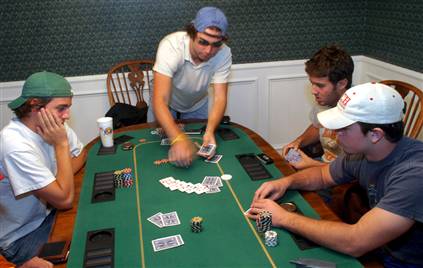1 in 10 US teens exhibits symptom of problem gambling
 Washington, Oct 24 : One in 10 adolescent boys exhibits a symptom of conduct disorder as well as a symptom of risky or problem gambling, according to a new U. S. study.
Washington, Oct 24 : One in 10 adolescent boys exhibits a symptom of conduct disorder as well as a symptom of risky or problem gambling, according to a new U. S. study.
The study, conducted by researchers at the University at Buffalo''s Research Institute on Addictions (RIA), has shown that as the number of conduct disorder symptoms increase, the number of problem gambling symptoms increase in step.
Female adolescents, on the other hand, exhibit conduct disorder (four percent) and risky or problem gambling (two percent) to a much lesser degree.
Symptoms of conduct disorder are defined as a number of chronic behaviour problems in childhood and adolescence.
These behaviours include lying, stealing, vandalism, impulsivity, substance abuse, verbal and physical aggression, cruelty to pets or people and repetitive behaviour that violates the rights of others or social norms.
"Youth without symptoms of conduct disorder have a five percent rate of risky or problem gambling. Youth with symptoms of conduct disorder have a 23 percent rate of risky or problem gambling," said John W. Welte, PhD, lead author of the RIA report.
In a study of 2,274 youth between the ages of 14 and 21, Welte and colleagues reported that the extent to which problem gambling and conduct disorder occurred at the same time was much stronger among younger (14-to-15 year-old) adolescents.
The study showed that for the 14-to-15 age-range, the odds of being a risky or problem gambler increased by a remarkable 80 percent with each additional conduct-disorder symptom during the past year. As the age of the adolescents increased, this effect weakened.
For the 20-to-21-year-olds, the researchers found no discernible relationship between conduct disorder and risky problem gambling.
The study was published in the October 2009 issue of the Journal of Adolescent Health. (ANI)